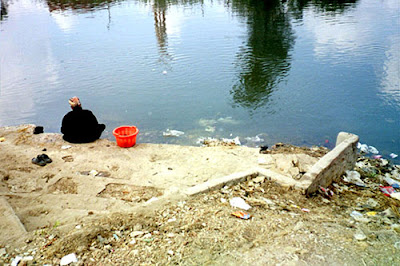Part A - Answer the following questions:
1.What did Zana describe as the reason for giving the cameras to the children in the beginning of the
documentary, i.e.: why didn't she just take the photographs herself?
- Zana felt that it would “be great to see the world from their eyes.”
2.Why is the photographer's point of view or unique voice part of what we consider when we talk about pictures? Can't we simply judge all pictures by the same criteria of good and bad regardless of who took them?
- The photographers point of view is a unique part of what we consider when we talk about art because the photographer is the viewer, in that the viewers are looking through the eyes of the photographer.
3. Reflect on what Avijit first says about painting: “I like to draw pictures because I want to express
what’s on my mind…I want to put my thoughts into colors.” What does this tell us about him?
- Avijit's quote tells us that he is creative and he feels he can make a point on how trapped him and his friends are, this also expresses his love for art.
4. Throughout this lesson, the term ‘personal expression’ is used to refer to art, sports, writing, and
other activities. How would you define personal expression? How are photography, painting and writing forms of personal expression?
- the term personal expression means to express ones self in a form of presentation where people have the option to view “to express ones self.” Photography , painting and writing are all forms of personal expression in that they all convey a message to the viewer.
- How can art (personal expression) serve as a means of educating others about a particular issue?
- Art can educate people on a matter by showing them what it is like in a specific situation. But although art and photography can educate viewers on cirtian matters, it can also deceive in that, people can convey a false message for personal gain. Example: propaganda, advertisements etc...
Part B- Critique
In the first critique I had you complete I encouraged you to only look at the physical qualities of the
pictures. This time I would like you to do a TWO part critique.
Visit this Kids with Cameras Gallery and look at the pictures, notice the links at the bottom of the page
are for locations other than India where this project has taken place.
i) Select what you believe are the 2 most beautiful images based on traditional photography standards
(Nice contrast, appealing colours and textures, clear focal point etc...) And in a sentence for each
explain why you like them.
Zana “group shot”
This is a good shot, by traditional standards, it has a good clear ISO, not too much background noise, it is a group shot there for its focal point is quite large and a little less clear then one which is meant to have a clear focal point.
Samaan W., 11 "As Before"

This image is a great image in that its focal point is solid and crisp. It also uses the rule of thirds to make a very interesting shot which is also pleasing to the eye. It has a fairly good ISO, although it might just be the ground but I feel the ISO could be turned down a bit.
ii) Select what you believe to be the most effective pictures at conveying a message or educating you about the issue of human rights abuses. And in a sentence for each explain why you chose them.
Samaan W., 11 "As Before"

Again this is a great image in which it conveys a sad message, in that you see this woman sitting gazing off into oblivion, looking lost and almost sad. You also see all the garbage and how this persons life is like. That is what makes this an effective shot.
Kochi, 10 "Up the Stairs"
This image is effective because you see this skinny boy going up these stairs carrying a bucket and it makes you wonder where he is going, what is next, and what will happen to him. That makes this and effective human rights photo.
iii) Does a picture need to be beautiful to be effective? Does it help?
A picture does not need to be beautiful to be effective or you would never get a message across. That being said, it does help to have a beautiful image.


No comments:
Post a Comment